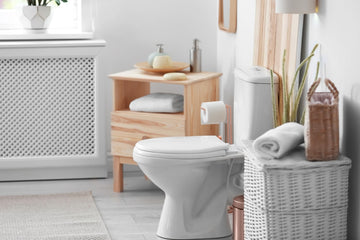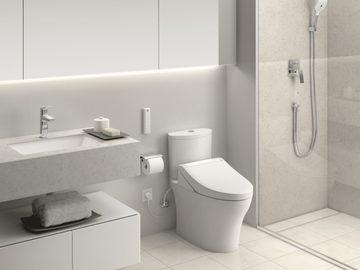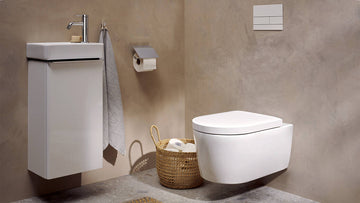In today's environmentally conscious world, selecting the right toilet is more than just a matter of choosing a style and color. For those in the Industry QA sector, understanding the nuances and benefits of water-saving toilets is crucial. This article provides comprehensive tips for buying water-saving toilets that will not only help reduce water consumption but also ensure efficiency and sustainability in every flush.

Why Choose Water-Saving Toilets?
Water-saving toilets, often termed as high-efficiency toilets (HETs), are designed to use less water per flush compared to traditional models. The primary reason to opt for these toilets is their ability to significantly cut down on water usage, which is vital for both environmental and economic reasons. According to the Environmental Protection Agency, switching to water-efficient toilets can save the average family nearly 13,000 gallons of water per year. For a deeper dive into the benefits of upgrading to a high-efficiency toilet, you can explore DripX's insights.
Key Features to Consider
1. Flush Efficiency
The most important feature when purchasing a water-saving toilet is its flush efficiency. Look for toilets with the WaterSense label, which ensures they meet the EPA's criteria for efficiency and performance. A WaterSense labeled toilet uses no more than 1.28 gallons per flush, which is 20% less than the current federal standard of 1.6 gallons.
2. Dual-Flush Mechanism
Another feature to consider is a dual-flush mechanism, which provides two flushing options: a half flush for liquid waste and a full flush for solid waste. This flexibility not only conserves water but also offers users better control over water usage.
3. Bowl Design
The design of the toilet bowl plays a significant role in its water-saving capabilities. Consider elongated bowls, as they provide better coverage and efficiency. Additionally, a glazed bowl surface can reduce the likelihood of clogs and improve overall flushing performance.
4. Pressure-Assisted vs. Gravity-Fed
When choosing a water-saving toilet, you will encounter two main types: pressure-assisted and gravity-fed. Pressure-assisted toilets use pressurized air to forcefully push water into the bowl, offering powerful flushes with minimal water use. Gravity-fed toilets, on the other hand, rely on the force of gravity to remove waste. Each type has its pros and cons, so consider your household's specific needs and preferences.
Installation and Maintenance
Installation is another critical factor in selecting a water-saving toilet. Some models are more challenging to install, especially those with advanced features like pressure assistance. It is often recommended to hire a professional plumber to ensure proper installation and avoid potential issues.
Maintenance is equally important. Regular checks and cleaning can prolong the lifespan of your toilet and maintain its efficiency. Investing in a model with easily replaceable parts can save time and money in the long run.
Cost Considerations
While water-saving toilets can be more expensive upfront compared to standard models, they often pay for themselves over time through reduced water bills. Additionally, many local and state governments offer rebates for purchasing high-efficiency toilets. It's worth checking with your local water utility or visiting resources like the water-saving toilet rebate programs page on DripX for more information.
Debunking Common Myths
There are several myths surrounding water-saving toilets, such as the misconception that they do not flush as effectively as traditional toilets. However, modern engineering has overcome these challenges, providing powerful flushes with less water. For more on this, see the water-saving toilet myths debunked article on DripX.
Conclusion
Choosing the right water-saving toilet involves assessing various factors, from flush efficiency to design and cost. For those in the Industry QA sector, understanding these elements can lead to more informed decisions, ultimately contributing to water conservation efforts and operational efficiency. By investing in a water-saving toilet, you are not only making a sustainable choice but also paving the way for a future with less water wastage.

FAQs
1. Are water-saving toilets worth the investment?
Yes, while the initial cost may be higher, the long-term savings on water bills and the environmental benefits make it a worthwhile investment.
2. How do I know if a toilet is truly water-saving?
Look for the WaterSense label, which certifies that the toilet meets the EPA's water efficiency and performance standards.
3. Can water-saving toilets handle large flushes effectively?
Modern water-saving toilets are designed with advanced flushing mechanisms to ensure effective waste removal even with reduced water usage.
For additional information on how water-saving toilets work, you can visit the HowStuffWorks guide on low-flow toilets.






